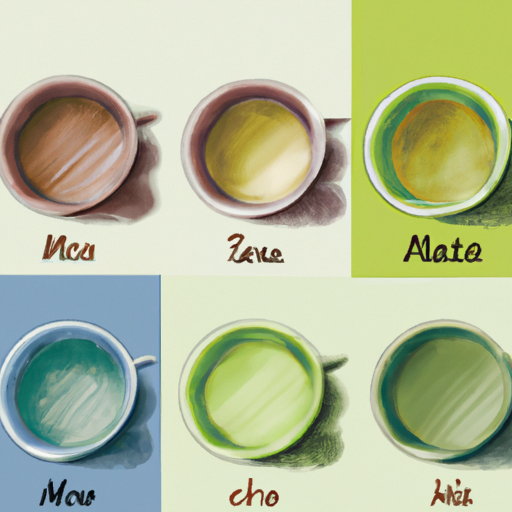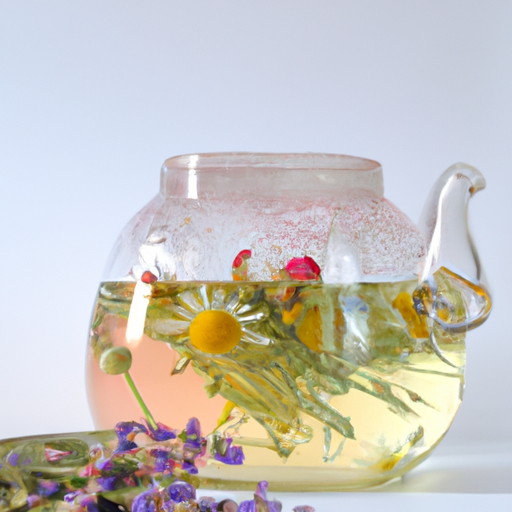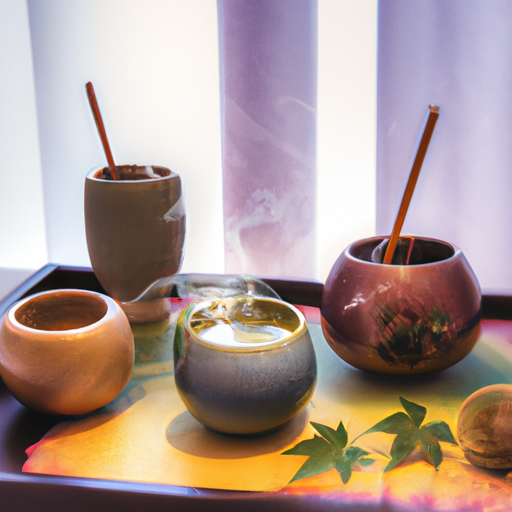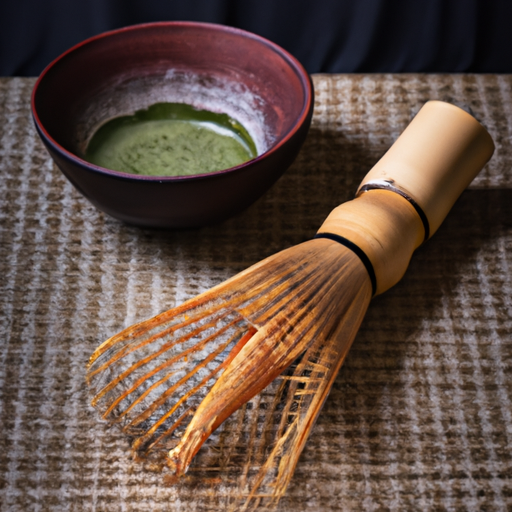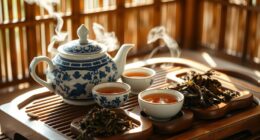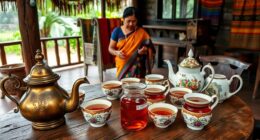I know you may be thinking, “Tea is just tea, right?” Think again, because there are six unique types of tea, each with its own special characteristics and methods of processing. Once you grasp these differences, you’ll never see your cup of tea in the same way again.
First up, we have white tea, the least processed type made from the buds and leaves of the Camellia Sinensis plant. It’s delicate and subtle, with a light flavor that’s perfect for those who prefer a more delicate brew.
Then there’s green tea, the oldest type of tea. It’s slightly oxidized and either pan-fired or steamed, giving it a unique grassy and fresh taste. Green tea is not only delicious but also packed with health benefits.
So, whether you’re a fan of the delicate and subtle white tea or the grassy and fresh green tea, there’s a type of tea out there for everyone.
Stay tuned as we dive deeper into the world of tea and explore the remaining four types – yellow tea, oolong tea, black tea, and dark tea.
Key Takeaways
- White tea is the least processed type of tea, with a delicate and subtle flavor. It is rich in antioxidants and can support healthy skin.
- Green tea is the oldest type of tea and has a unique grassy and fresh taste. It boosts metabolism, aids in weight loss, reduces inflammation, and has high antioxidant content.
- Yellow tea is a rare type from China that goes through a yellowing stage during processing. It is believed to have detoxifying effects and promotes overall well-being.
- Oolong tea is semi-oxidized and combines characteristics of green and black tea. It may improve digestion and reduce inflammation.
Types of Tea
I can identify the different types of tea, which include white tea, green tea, yellow tea, oolong tea, black tea, and dark tea (puerh). Each type of tea has its own unique characteristics and brewing methods.
White tea is the least processed and is made from the buds and leaves of the Camellia Sinensis plant.
Green tea, the oldest type, is slightly oxidized and can be pan-fired or steamed.
Yellow tea is a rare type from China that goes through a yellowing stage during processing.
Oolong tea is semi-oxidized and combines the characteristics of both green and black tea.
Black tea is the most oxidized and is commonly referred to as red tea in China.
Dark tea, also known as puerh, is fermented and can be compressed into shaped cakes or sold loose.
In addition to their distinct flavors, each type of tea also offers various health benefits.
White tea is rich in antioxidants and can support healthy skin.
Green tea is known for its metabolism-boosting properties and can aid in weight loss.
Yellow tea is believed to have detoxifying effects and can promote overall well-being.
Oolong tea may help improve digestion and reduce inflammation.
Black tea is known for its energy-boosting properties and can also support heart health.
Dark tea, specifically puerh, is believed to aid in digestion and can help regulate cholesterol levels.
Overall, the different types of tea offer a wide range of flavors and health benefits, making them a popular choice for tea enthusiasts around the world.
White Tea
White tea is made from the buds and leaves of the Camellia Sinensis plant and is the least processed among the various tea categories. It’s known for its delicate flavor and subtle floral notes. Drinking white tea has several benefits.
Firstly, it’s rich in antioxidants that help protect the body against free radicals and reduce the risk of chronic diseases. Additionally, white tea is believed to have anti-aging properties and can promote healthy skin.
To properly brew white tea, it’s important to use water that isn’t too hot, around 175°F. Steep the leaves for about 2-3 minutes to extract the delicate flavors.
White tea can be enjoyed on its own or with a touch of honey for added sweetness.
Green Tea
Green tea, the second oldest type of tea, is known for its numerous health benefits, including a statistic that shows it may help lower the risk of heart disease by up to 31%. This type of tea is made from the leaves of the Camellia Sinensis plant, just like black and white tea.
Green tea is slightly oxidized, which gives it a unique flavor and color. One of the main benefits of green tea is its high antioxidant content, which can help protect against free radicals and reduce inflammation. Green tea also contains a compound called catechins, which’ve been shown to have anti-cancer properties.
When brewing green tea, it’s important to use water that’s around 175°F and steep it for about 2-3 minutes to bring out the best flavor and health benefits.
Frequently Asked Questions
What are the health benefits associated with drinking different types of tea?
Drinking different types of tea offers various health benefits. Green tea boosts metabolism and aids weight loss. Black tea improves heart health. White tea has antioxidant properties. Oolong tea aids digestion. Herbal teas have calming effects. Brewing techniques vary for each type.
How should different types of tea be brewed to achieve the best flavor?
To achieve the best flavor, different types of tea require specific brewing techniques. For example, green tea should be steeped in water around 175°F for 2-3 minutes to preserve its delicate flavors and avoid bitterness. Each tea has its own unique flavor profile.
Are there any potential side effects or risks associated with consuming certain types of tea?
Potential side effects of consuming certain types of tea include allergies and caffeine sensitivity. Allergies can manifest as skin rashes or difficulty breathing, while caffeine sensitivity can lead to increased heart rate or insomnia.
Can different types of tea be mixed together to create unique flavor combinations?
Yes, different types of tea can be mixed together to create unique flavor combinations. By combining various teas, you can create blends that offer a harmonious balance of flavors, allowing you to explore and enjoy a wide range of taste experiences.
Are there any cultural or historical significance associated with the different types of tea?
Cultural significance and historical importance are associated with the different types of tea. Each type has its own traditions, rituals, and origins that have been passed down through generations, making tea an integral part of various cultures worldwide.

